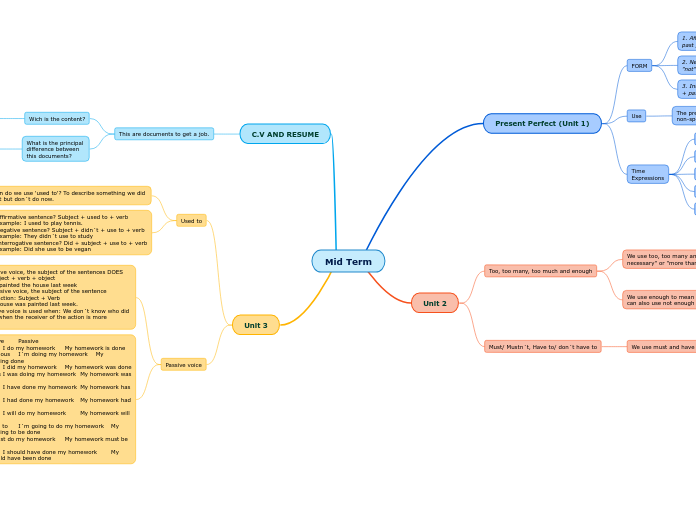por Maruuchi 1 4 anos atrás
335
Mid Term
The provided text explains the usage of various English grammar constructs, specifically focusing on the structure and application of the "used to" form, passive voice, and present perfect tense.

por Maruuchi 1 4 anos atrás
335

Mais informações
The extension, the C.V is more extense than the resume.
-Studies of the person -Habilities of the person -Laboral experience of the person
We use don´t have to to say that something isn´t necessary.
We use mustn´t to talk about thing are not allowed.
When we ask questions about obligations and rules, we usually use have to
Enough comes after an adjective or adverb
We use too much before uncountable nouns
We use too many before countable nouns
We use too before adjectives and adverbs